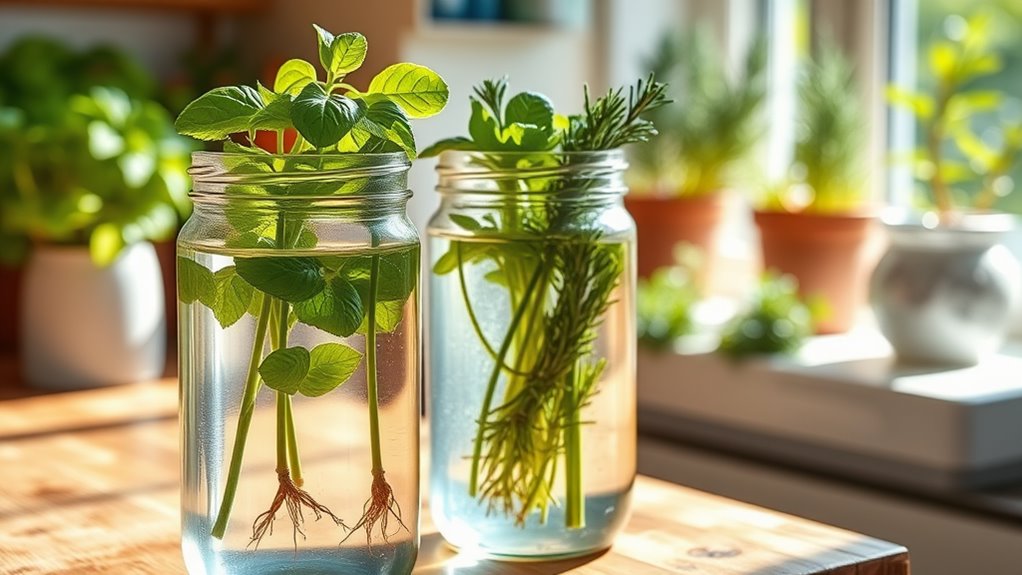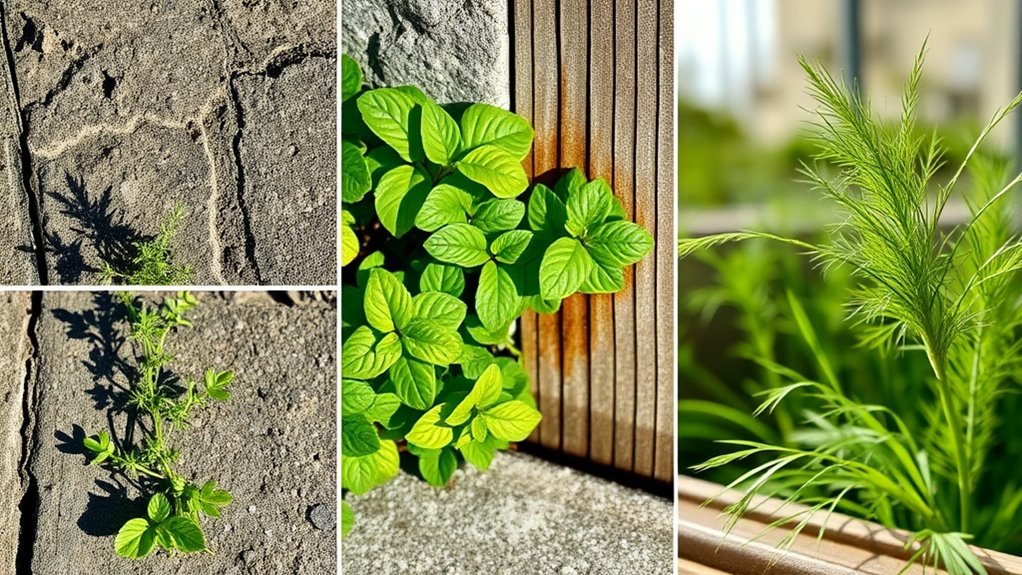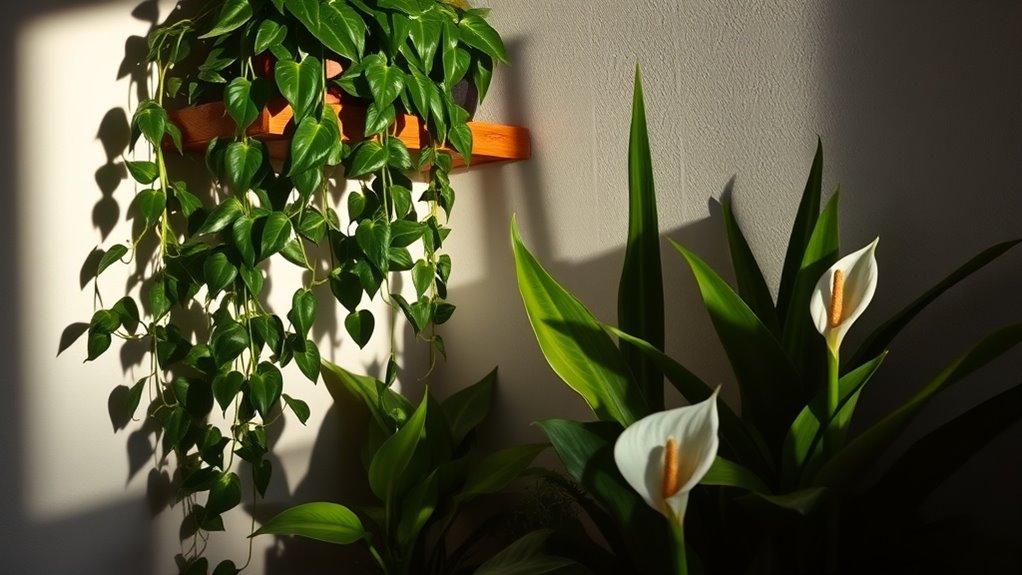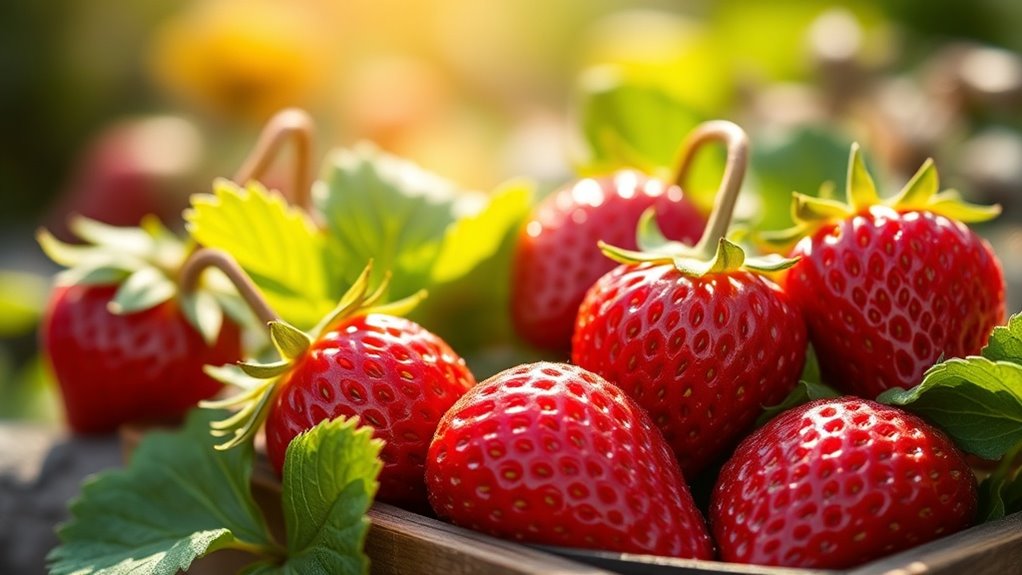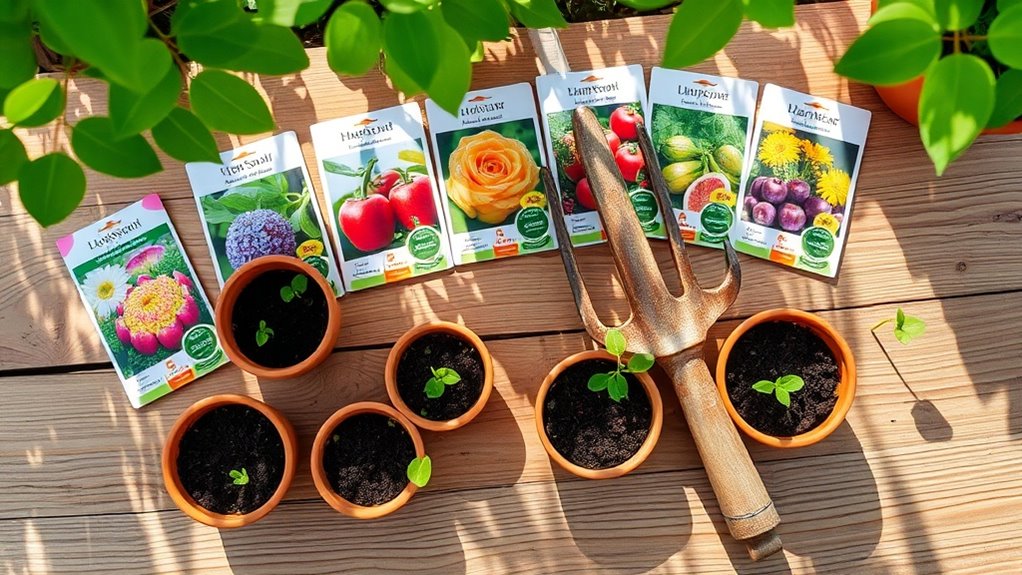You Won’t Believe How Easy It Is to Grow Herbs in Water
Growing herbs in water is a straightforward process that anyone can master, regardless of gardening experience. By using cuttings from healthy plants, you can cultivate a variety of herbs without the hassle of soil. This method not only conserves space but also simplifies maintenance. Understanding the specific requirements for successful water propagation is crucial. Let’s explore the essential steps and best practices to ensure your herb garden flourishes effortlessly.
Key Takeaways
- Growing herbs in water eliminates soil, making maintenance simpler and mess-free.
- Propagating herbs is easy; just take cuttings, remove lower leaves, and place them in water.
- Monitor root growth in clear containers, ensuring optimal health and easy maintenance.
- Changing water weekly prevents stagnation and promotes healthy growth.
- Harvesting herbs is straightforward; cut above a leaf node and store properly for freshness.
Benefits of Growing Herbs in Water
Growing herbs in water offers several distinct advantages that can enhance your gardening experience.
First, it eliminates the need for soil, reducing mess and simplifying maintenance.
You’ll also find that water propagation allows for faster growth, as herbs in water can absorb nutrients directly from the water.
Additionally, this method enables you to monitor root development closely, ensuring optimal health.
You can easily propagate herbs from cuttings, making it cost-effective.
Finally, growing herbs in water can be visually appealing, adding a touch of greenery to your space.
Embrace this technique for a hassle-free and rewarding gardening endeavor. Moreover, growing herbs in water can also help you save space, as they can be placed in smaller containers without the need for larger pots.
Choosing the Right Herbs for Water Growth
When selecting herbs for water growth, focus on those known for their rooting potential, such as basil, mint, and rosemary. These herbs not only thrive in water but also adapt quickly, making them ideal candidates for your hydroponic setup. Understanding which herbs perform best in this medium will significantly enhance your success in growing them. Additionally, herbs like basil can grow roots in as little as one to two weeks, making them a fast-growing option for your kitchen garden.
Best Herbs for Water
Which herbs thrive best in water? You’ll find that certain herbs adapt exceptionally well to hydroponic growth. Here’s a quick guide to help you choose:
| Herb | Light Requirement | Growth Rate |
|---|---|---|
| Basil | Full Sun | Fast |
| Mint | Partial Shade | Moderate |
| Cilantro | Full Sun | Fast |
| Chives | Full Sun | Slow |
| Thyme | Full Sun | Moderate |
These herbs not only flourish in water but also enhance your culinary creations. Experiment with these options, and enjoy the benefits of fresh herbs year-round!
Herbs With Rooting Potential
Selecting herbs with strong rooting potential is key for successful hydroponic growth.
Basil, mint, and oregano are excellent choices due to their ability to sprout roots quickly in water.
You’ll want to take cuttings just below a node for optimal growth.
Consider using rosemary and thyme as well; both can thrive in water, given proper light and temperature.
Always change the water weekly to prevent stagnation and promote healthy root development.
Ensure your containers are clean to avoid bacterial growth, which can hinder rooting.
With the right herbs and care, you’ll enjoy a thriving hydroponic garden in no time.
Step-by-Step Guide to Propagating Herbs in Water
Propagating herbs in water is a simple and rewarding process that can yield multiple new plants from just a few cuttings.
Start by selecting healthy stems, ideally 4-6 inches long, with a few leaves.
Remove the lower leaves to prevent rot.
Place the cuttings in a jar or glass filled with clean water, ensuring the nodes are submerged.
Position the container in bright, indirect light.
Change the water every few days to keep it fresh.
Within a couple of weeks, you’ll notice roots developing.
Once roots are about 2-3 inches long, you can transfer the cuttings to soil or continue in water. This method of propagation is a form of hydroponic cultivation, which allows for efficient growth without soil.
The Best Containers for Growing Herbs in Water
Here are three ideal types of containers to consider:
-
Glass Jars: Transparent jars let you monitor root growth and water levels easily. Opt for wide-mouth varieties for better airflow.
-
Hydroponic Containers: These are designed specifically for water growing, often featuring built-in supports for plants and drainage systems.
-
Ceramic Pots: While not transparent, they maintain temperature and can provide stability. Just ensure they’ve drainage holes to prevent water stagnation.
Selecting the right container sets the foundation for healthy herb growth, especially when growing micro herbs in mugs can enhance your gardening experience in small spaces.
Essential Care Tips for Water-Grown Herbs
To successfully grow herbs in water, you need to start with the right selection of plants that thrive in this medium. Maintaining optimal water quality is crucial for their health, so keep an eye on clarity and nutrient levels. Additionally, it’s beneficial to choose herbs that naturally adapt to low-light conditions, as they will flourish even in less-than-ideal lighting. Finally, mastering proper harvesting techniques can enhance your yields and ensure your herbs remain vibrant and productive.
Choosing the Right Herbs
How do you select the best herbs for growing in water?
Start by considering herbs that thrive in hydroponic conditions.
Here are three excellent choices:
- Basil: This aromatic herb roots easily and flourishes in water, providing a robust flavor for your dishes.
- Mint: Known for its vigorous growth, mint adapts well to water and can add a refreshing touch to beverages and meals.
- Chives: With minimal care, chives grow quickly and can be snipped as needed, enhancing your culinary creations.
Choosing these herbs ensures a successful water-growing experience, maximizing flavor and convenience in your cooking.
Maintaining Water Quality
While growing herbs in water can be a rewarding endeavor, maintaining water quality is crucial for their health and vitality.
Change the water every week to prevent stagnation and bacterial growth. Use filtered or distilled water to avoid harmful chemicals found in tap water. Monitor the water level regularly, ensuring the herb stems remain submerged but not too deep. Add a few drops of liquid fertilizer every month to provide essential nutrients. Keep your herbs in a location with indirect sunlight to prevent algae growth.
Harvesting Techniques Explained
When is the best time to harvest your water-grown herbs for optimal flavor and growth?
Generally, you should harvest in the morning after the dew has dried.
This timing ensures peak essential oil concentration.
Here are some essential harvesting techniques:
- Use Clean Scissors: Always use sterilized scissors to avoid introducing bacteria.
- Cut Above Nodes: Trim stems just above a node to encourage regrowth and prevent damage.
- Harvest Regularly: Regularly snip off leaves and stems to promote bushier growth and maintain flavor intensity.
Troubleshooting Common Issues
What do you do when your herbs aren’t thriving in water? First, check for common issues like root rot or insufficient light. Ensure the water is clean and changed regularly to prevent algae growth. Below is a troubleshooting table to guide you:
| Issue | Symptoms | Solutions |
|---|---|---|
| Root Rot | Yellowing leaves, mushy stems | Trim affected roots, use fresh water |
| Algae Growth | Green film on water | Change water frequently, clean container |
| Insufficient Light | Leggy growth, pale leaves | Move to a brighter location |
| Wilting Leaves | Droopy, dry leaves | Ensure water level is adequate |
| Slow Growth | Stunted development | Increase nutrient levels |
By ensuring proper light and water conditions, you can maximize the health of your herbs grown in water.
Harvesting and Using Your Fresh Herbs
Harvest your fresh herbs at the right time to maximize flavor and ensure continued growth. You can follow these steps to effectively harvest and utilize them:
- Timing: Harvest in the morning when oils are most concentrated, ensuring peak flavor.
- Cutting: Use sharp scissors or shears, snipping just above a leaf node to encourage new growth.
- Storage: Place harvested herbs in a damp paper towel, sealing them in a plastic bag. Store in the refrigerator for up to a week.
Using fresh herbs enhances dishes significantly. Growing culinary herbs indoors not only provides fresh ingredients but also adds a delightful touch to your kitchen decor. Experiment with different recipes to discover the full potential of your home-grown herbs!

